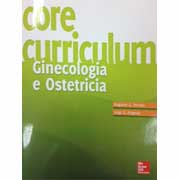147. Adjuvant Role of MIB1 Index in Differentiating Serous Ovarian Tumors - Preliminary Report
Anticancer Research 17:1287-1292, 1997
( In Coll. con A.Agnello,I.Sassi,F.Mangili,G.L.Taccagni,A.Mariani,A.Ferrari )
Summary: Atipically prolifereting serous tumors (APST) account for 15% of all ovarian serous apithelial neoplasms. The differences between benign, borderline and malignant ovarian tumors in principally due to their cellular proliferative potential. By means of MIB1 expression we could recognize differences in proliferation among serous ovarian tumors, overcoming interobserver variability. Thirty-three patients with serious ovarian tumors, treated at S. Raffaele Hospital, University of Milan between November 1, 1992 and July 31, 1994 were used as study the population: 9 patients had serous cystoadenocarcinoma, 14 patients had APST and 10 patients had serous cystoadenoma. Pathological slides of all the cases were reviewed and immunohistochemical analysis was performed on formalin fixed, paraffin wax embedded tissue. Person’s chi-square test and fisher’s exact test were performed for statistical evaluation. The percentage of MIB1 positive neoplastic cells ranged from, 0% to 2,1% ( median 0,45%, mean 0,69%) in cystoadenomas, 1,3% to 7% ( median 2,9% mean 3,98%) in APSTs and 4,7% to 20,3% (median 6,95% mean 9,51%) in cystoadenocarcinomas (p < 0,0001; F = 47,7). A high percentage expression of MIB1 in a seruos tumor, initially diagnosed as APST, promoted a wider sampling of the surgical specimen confirming the presence of a carcinomatous component. MIB1 index is reported as representative of cellular proliferative potential. The analysis of MIB1 index provided valuable information in addition to that gained by conventional microscopic study in all classes where diagnostic difficoulties arose in assessing APST.
